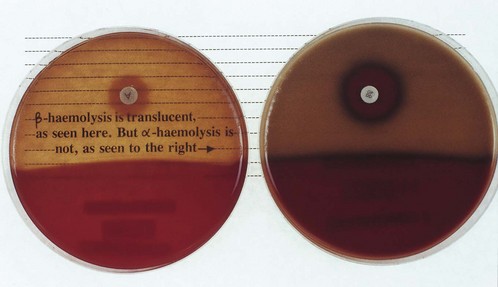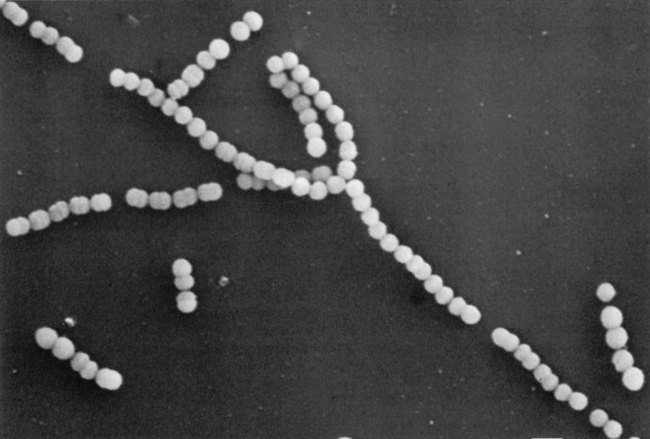Chapter 11 Streptococci, staphylococci and micrococci
Streptococci
General properties
Culture
These cocci grow well on blood agar, although enrichment of media with glucose and serum may be necessary. Typical haemolytic reactions are produced on blood agar (Fig. 11.1):
• α-haemolysis: narrow zone of partial haemolysis and green (viridans) discolouration around the colony, e.g. viridans streptococci
Streptococcus pyogenes (group A)
Characteristics
Exotoxins and enzymes
Produces a large number of biologically active substances, such as:
• hyaluronidase: attacks the material that binds the connective tissue, thereby causing increasing permeability (hence called the ‘spreading factor’)
Culture and identification
Culture on blood agar yields characteristic β-haemolytic colonies (lysis of blood due to streptolysins O and S). A Gram-stained smear may show characteristic cocci in chains (Fig. 11.2); these are more developed in liquid than in solid media. The isolate can be presumptively identified as Streptococcus pyogenes if it is sensitive to bacitracin.
Streptococcus agalactiae (group B)
Oral streptococci
Each of these groups comprises a number of species (Table 11.1).
| Group | Species |
|---|---|
| mutans group | S. mutans, serotypes c, e, f |
| S. sobrinus, serotypes d, g | |
| S. cricetus, serotype a | |
| S. rattus, serotype b and others | |
| salivarius group | S. salivarius |
| S. vestibularis | |
| anginosus group | S. constellatus |
| S. intermedius | |
| S. anginosus | |
| mitis group | S. sanguinis |
| S. gordonii | |
| S. parasanguinis |
Stay updated, free dental videos. Join our Telegram channel

VIDEdental - Online dental courses




